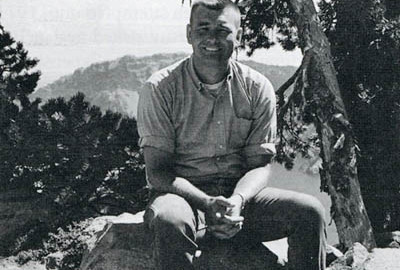Did it relate to the Atlas of Oregon Lakes?
That publication wasn’t around of course, but it was sort of like that. I think that’s what he wanted to do since there was virtually nothing available on lakes of Oregon. Most of the lakes hadn’t been studied, but there was some information that the fishery people had collected. They were stocking lakes and looked at them as habitat for fish, so in the process, they collected limnological data. R.C. Newcombe, for example, did this for several Cascade lakes and the Forest Service collected data for some of their lakes in the Cascades. The first thing I did was collect all the literature I could find. I traveled around the state and pulled together all the information I could find on these lakes. Then I began to formulate a thesis. One of the ideas I had was to look at the Warner Valley lakes located east of Lakeview. I thought it would be interesting to look at a salinity gradient going back to my old days working on the salamanders. I thought that it’s conceivable that there’s a salinity gradient, that the lakes get more saline further north. My hypothesis was that these lakes would offer different habitats because there is a salinity gradient. Organisms in Blue Joint Lake, for example, at the upper end of the valley might be more tolerant to salinity and adverse limnological conditions than those living in the deeper and fresher lakes in the southern end of the valley. In the fall of 1967, Jack and I drove down there and it turned out that summer was one of the driest ones on record. These lakes were really diminishing and we talked to the water master for Lake County. He warned me that it was possible these lakes could dry up by the next summer and I wouldn’t have a study site. This meant I could lose a whole year. Since I had dropped my Ph.D. at North Dakota I had already been in graduate school for four years, having spent two additional years at North Dakota after my masters. Those years were lost time except that I was able to transfer all my credits. When I first came to Oregon I already had four years as an undergraduate, and another four years as a graduate student at North Dakota. I didn’t want to spend five years more since I was getting older and had been in the Marines. I was over 30 and I didn’t want to spend my entire life in school, so I made it clear that I wanted to graduate by 1970. I wasn’t going to spend my life in Corvallis, especially since I’d never seen so many people who were working on masters and doctorates who had been at OSU for a lifetime it seemed like.


